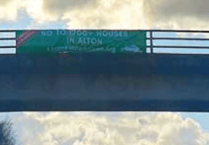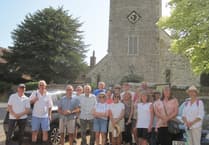As a resident of Churt, I am incensed by the changes wrought on the villages and countryside around Farnborough.
The recent airspace change has created a narrow corridor of inbound aircraft making highly-invasive noise directly over our property and those of at least 14,000 others in villages on that one approach path.
Prior to the change this noise was at least dispersed and less intrusive, now it’s dreadful. They haven’t even completed the review of the impact of the recent changes before announcing expansion plans that would make things even more intolerable.
I read the interview with Simon Geere. His statements left more questions than answers, apart from confirming there is no “listening” going on, only “telling”, in the latest box ticking exercised by the FAL management.
I’ve listed some of his comments below in bullets, with some follow-up questions/observations that they raise:
"We’re predominantly a business aviation airport."
Oh, so what are the rest of the movements?
What percentage is non-business?
"We’re not allowed to handle scheduled passenger services or charter flights or freight operations."
So why are the public able to book a flight to holiday destination like Nice?
Why are they handling public charter flights?
Why are they shipping dogs, that’s freight!
"When we look at our passenger profile, there is not strong evidence to suggest the weekends are any more leisure-focused than the rest of the week."
So there are leisure flights?
What proportion of flights are leisure at the weekend and in the week?
"We need to grow at the weekends at the same rate as we want to grow during the week, no more, no less.
"We forecast that market demand will hit our annual cap by around about 2030."
That would be a six per cent growth from 32,000 a year actual movements today. The actual growth for the past years has been one per cent. What has changed to increase the growth?
They don’t expect to hit their total cap, they just want to create an excuse for the doubling of weekend growth.
"Today the airport supports directly or indirectly near-on 3,000 jobs and generates £200 million a year for the local economy."
The airport generates only around 400 jobs locally so how does it generate £200m in the local economy and where are the other 2,600 jobs?
How many of those incremental job will still be there in 2040 when AI and robotics replaces them? How is that going to benefit the local economy?
"All the proposals we are consulting on are within the 2019 noise budget that was in the Rushmoor Borough Local Plan."
What’s a noise budget?
How does that apply to people living under the concentrated approach paths created by the recent airspace changes?
"People who live in certain communities might not have experienced quite the same level of perceived disruption as they previously did pre- and post- the airspace change programme. But equally, some people have benefited from the changes."
How can you justify making changes that ruin the lives of some people while benefiting others, by creating concentrated flight paths over rural areas? At least when they were distributed before the change there was less impact on people on the ground.
"After the changes, aircraft can now descend quicker, they can climb faster, and they can take more direct routing into the airport."
They can’t descend faster because they can’t approach any higher, because of the Heathrow and Gatwick traffic.
If they can descend quicker, why are they routed even lower over the once-quiet countryside than they were before the airspace change?
"So it’s a bit alarmist to think everyone’s going to turn up in three hours and then there will be nothing for the rest of the day."
It’s already happening. Peak hours already have periods with flights every two to three minutes. So how do you manage those? You’re going to make the those peak hours even longer.
By Peter Scott
Churt




